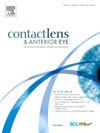泪液研究的国际报告指南:德尔菲共识。
IF 3.7
3区 医学
Q1 OPHTHALMOLOGY
引用次数: 0
摘要
目的:泪液是一种有价值的生物标志物,用于诊断、监测和筛查,因为它具有微创、廉价和快速收集的特点。然而,缺乏标准化的报告妨碍了实地的再现性。为了应对这些挑战,本研究旨在建立适合泪液研究的基于共识的国际报告准则。方法:采用德尔菲法,撕裂研究网络聘请74名国际专业人士评估35份拟议的报告声明。这些陈述涵盖了泪液研究的基本方面,包括术语、收集、储存、分析前处理、分析和数据规范化。专业人士根据5分李克特量表(非常不重要-非常重要)对他们是否同意包括每个陈述的必要性进行了排名。共识定义为≥70%的同意,所有评分都是匿名收集和分析的。结果:在第一轮德尔菲中,35个提议的陈述中有34个达成了共识,反映了专业人员之间的高度一致,其中26个陈述在90%或更高的协议水平上达到了强烈的共识。由此产生的指南提供了详细的建议,以标准化报告,提高透明度,并提高泪液研究的可重复性。结论:泪液报告指南(tear - rg)是泪液研究标准化研究实践的重要一步。通过解决关键的方法和报告问题,这些准则旨在提高这一快速发展领域研究的可重复性和透明度。这项工作强调了在泪液研究中推进生物标志物发现和临床应用的标准化框架的重要性。本文章由计算机程序翻译,如有差异,请以英文原文为准。
International reporting guidelines for tear fluid research: A Delphi consensus
Purpose
Tear fluid is a valuable biomarker source for diagnostics, monitoring, and screening thanks to its minimally invasive, inexpensive, and rapid collection. However, the lack of standardized reporting has hindered reproducibility in the field. To address these challenges, this study aimed to establish international consensus-based reporting guidelines tailored to tear fluid research.
Methods
Using the Delphi methodology, the Tear Research Network engaged 74 international professionals to evaluate 35 proposed reporting statements. These statements covered essential aspects of tear fluid research, including terminology, collection, storage, pre-analytical processing, analysis, and data normalization. Professionals ranked their agreement on the need to include each of the statements based on a 5-point Likert scale (very unimportant – very important). Consensus was defined as ≥70 % agreement, and all ratings were collected and analyzed anonymously.
Results
Consensus was achieved for 34 of the 35 proposed statements in the first Delphi round, reflecting a high level of agreement among professionals, with 26 of these statements reaching strong consensus at agreement levels of 90% or higher. The resulting guidelines provide detailed recommendations to standardize reporting, improve transparency, and enhance reproducibility in tear fluid studies.
Conclusions
The TEAR-reporting guidelines (TEAR-RG) represent a significant step toward standardizing research practices in tear fluid studies. By addressing key methodological and reporting issues, these guidelines aim to improve the reproducibility and transparency of research in this rapidly evolving field. This work underscores the importance of standardized frameworks for advancing biomarker discovery and clinical applications in tear fluid research.
求助全文
通过发布文献求助,成功后即可免费获取论文全文。
去求助
来源期刊

Contact Lens & Anterior Eye
OPHTHALMOLOGY-
CiteScore
7.60
自引率
18.80%
发文量
198
审稿时长
55 days
期刊介绍:
Contact Lens & Anterior Eye is a research-based journal covering all aspects of contact lens theory and practice, including original articles on invention and innovations, as well as the regular features of: Case Reports; Literary Reviews; Editorials; Instrumentation and Techniques and Dates of Professional Meetings.
 求助内容:
求助内容: 应助结果提醒方式:
应助结果提醒方式:


